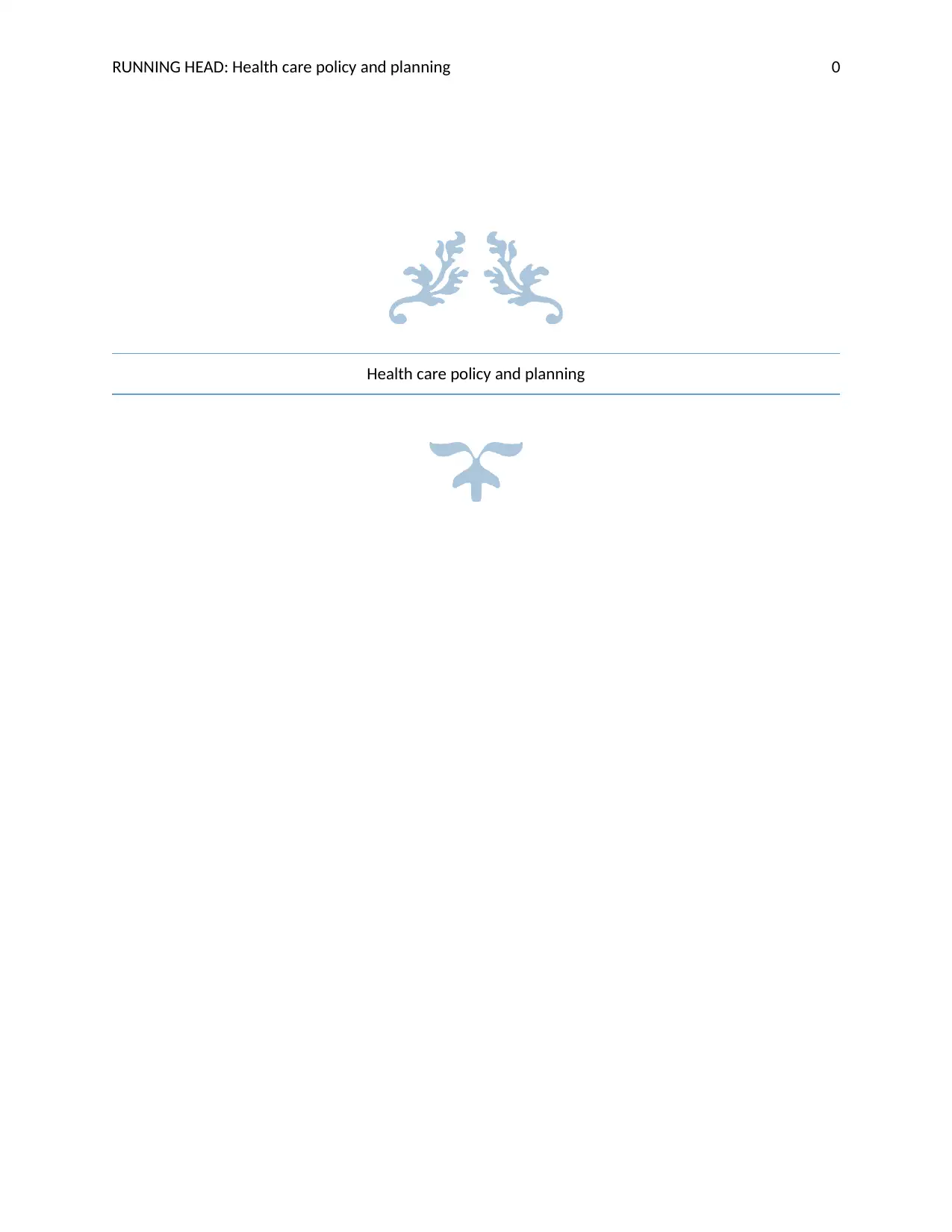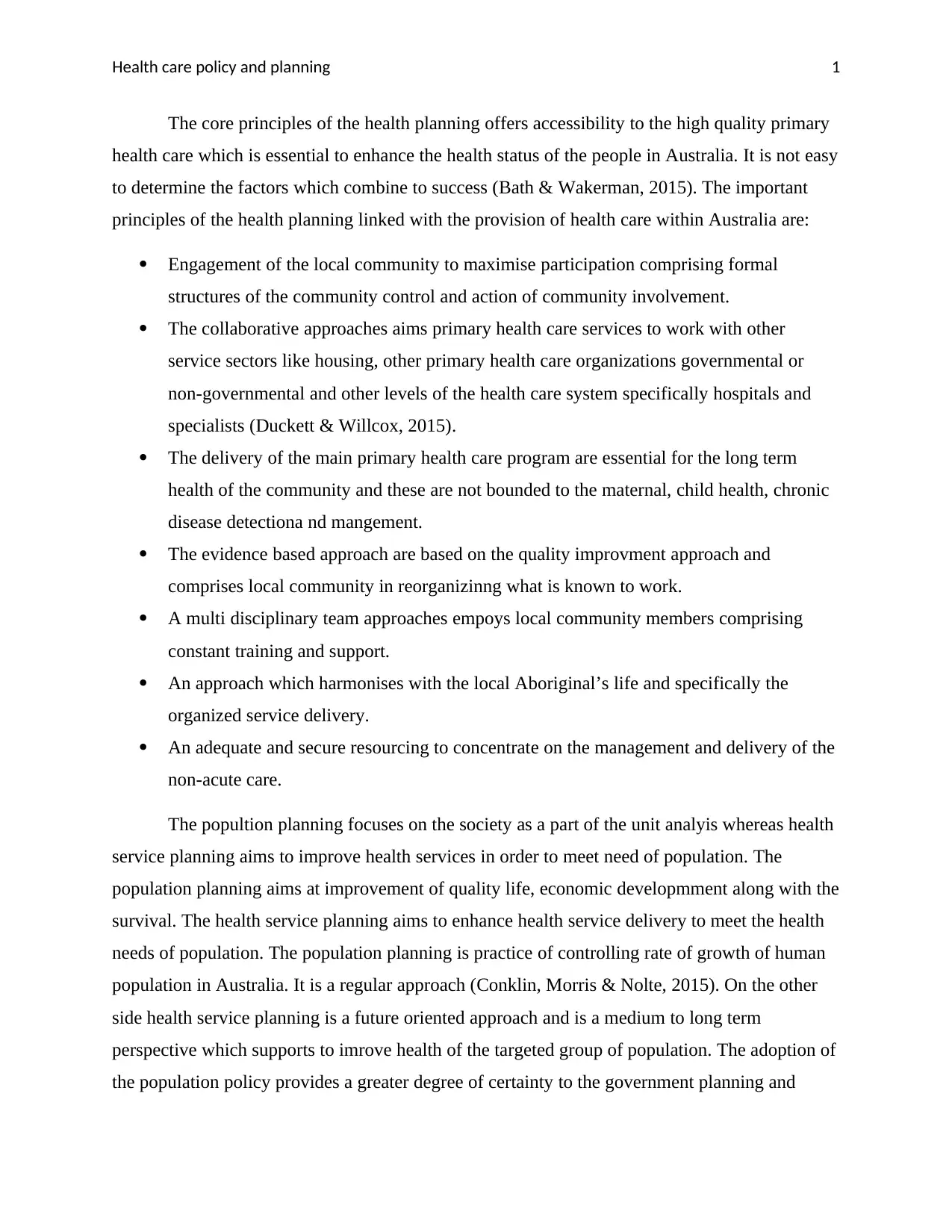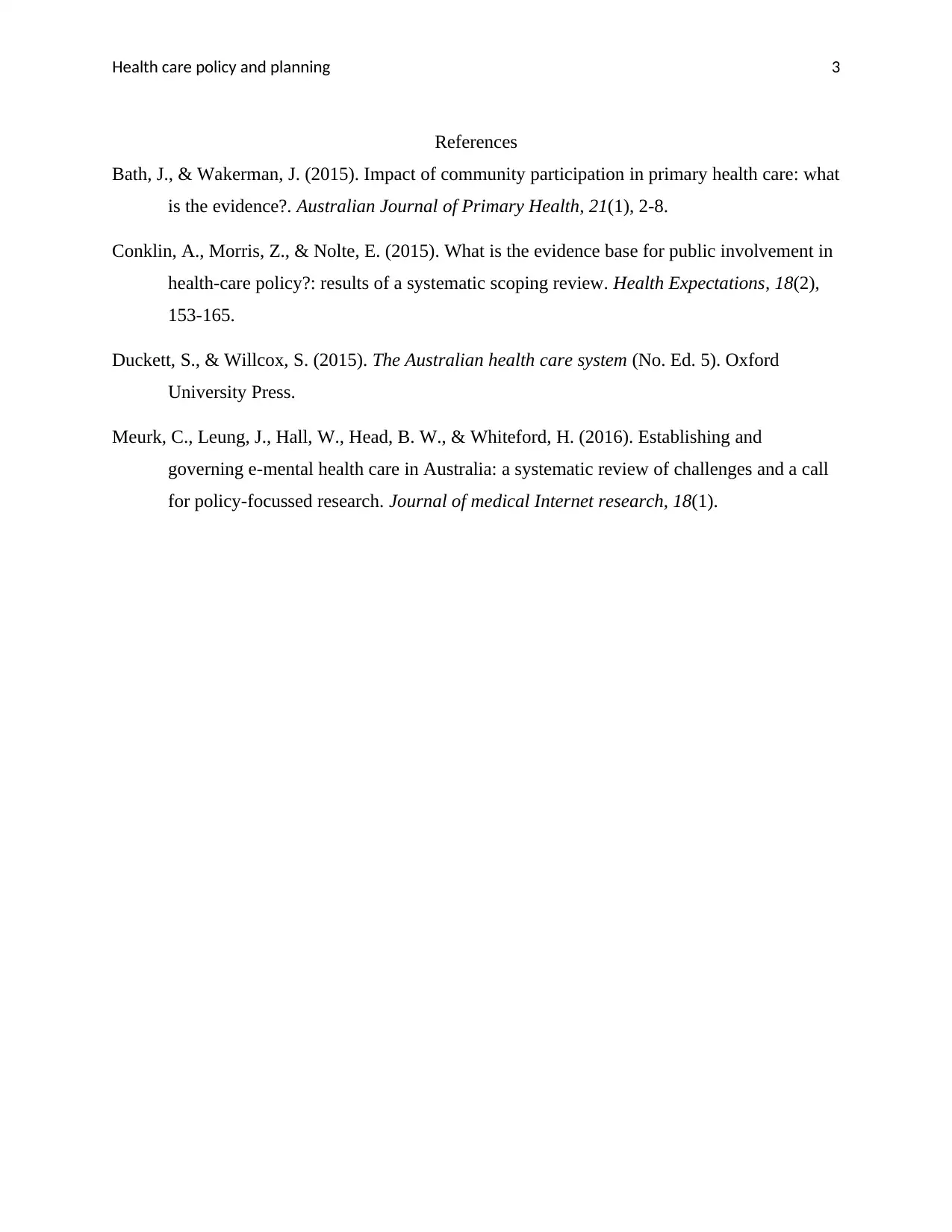Health Care Planning Report: Australian Health Care System Analysis
VerifiedAdded on 2023/05/31
|4
|669
|372
Report
AI Summary
This report provides an overview of health care planning within the Australian context. It begins by outlining the core principles of health planning, including community engagement, collaborative approaches, evidence-based practices, and multi-disciplinary teams. The report then differentiates between population planning and health service planning, highlighting their respective goals and approaches. Population planning focuses on managing the growth of the population, while health service planning aims to improve the delivery of health services to meet the needs of the population. The report emphasizes the importance of both approaches in ensuring a high-quality health care system. The report also references key literature to support the analysis, including works by Bath & Wakerman (2015), Conklin, Morris & Nolte (2015), Duckett & Willcox (2015), and Meurk, Leung, Hall, Head & Whiteford (2016). The report provides an insightful analysis of the Australian healthcare system and the significance of health care planning.
1 out of 4











![[object Object]](/_next/static/media/star-bottom.7253800d.svg)